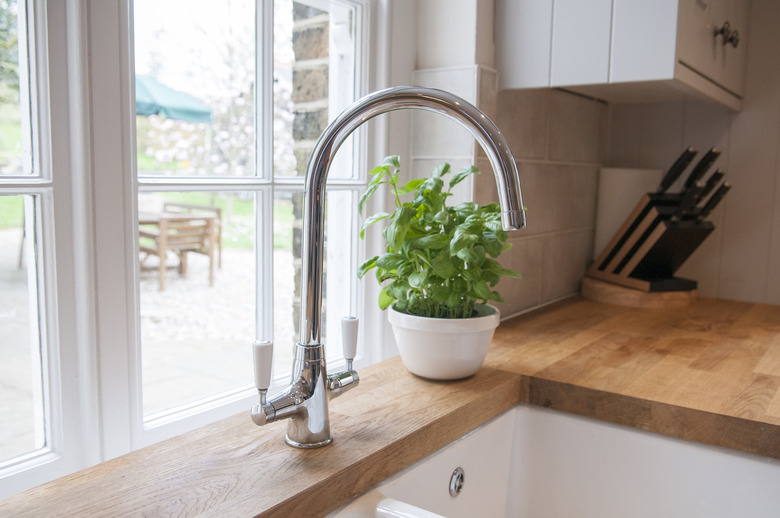Differences In Cast Acrylic & Porcelain Sinks
When buying a new sink for your kitchen or bathroom, you have a variety of materials to choose from. Acrylic vs. porcelain bathroom sinks look very similar, but have different benefits. For this reason, it can be difficult to choose between the two. Instead, pick a sink that matches your kitchen or bathroom decor and has a level of durability that works with your lifestyle.
Styles Remain Very Similar
Styles Remain Very Similar
Both porcelain and cast acrylic sinks come in double and single sink styles. You can also choose between drop-in sinks (where the edge of the sink sits on top of the countertop), under-mount sinks (where the sink is mounted underneath the countertop), and self-rimming sinks (which can simply be dropped in place and secured with silicone).
For the kitchen, both porcelain and acrylic sinks are available in the old-fashioned apron-front style, where the front of the sink extends over the front of the counter. For the bathroom, porcelain sinks are also available in the free-standing pedestal style and the vessel-mount style, where the sink sits on top of the countertop like a bowl.
Acrylic vs. Porcelain Sinks
Acrylic vs. Porcelain Sinks
Porcelain sinks are made when ground glass is melted and applied to a cast iron or metal base. This makes for a fairly durable material that comes in a variety of colors and shapes. Porcelain sinks have been around for hundreds of years and are often found in older homes.
Cast acrylic sinks are made of acrylic material molded into a sink using a cast. This makes for a more lightweight material compared to other sinks. Acrylic also comes in a wide range of colors and can be purchased with a shiny or matte finish.
Cost of Both Types of Sinks
Cost of Both Types of Sinks
One of the major differences between these types of sinks is the cost. While the price of porcelain and acrylic sinks can vary based on the size (kitchen sinks are typically larger and more expensive, for example), acrylic sinks are generally more affordable. More modern and expensive styles, like vessel sinks, are usually made of porcelain.
Porcelain and Acrylic Sink Durability
Porcelain and Acrylic Sink Durability
Porcelain can easily chip or scratch if you drop something heavy into the bowl. However, with good care, a porcelain sink can last for decades. Most high-quality porcelain sinks will last 25 to 30 years. Porcelain sinks absorb heat very well, and you may even have to refill the sink with hot water when doing lots of dishes as the sink will absorb much of the heat from the water.
Acrylic is slightly harder to chip, but can still scratch fairly easily. Acrylic is not as heat resistant as other materials and leaving a hot pan on the surface of acrylic sinks can cause yellowing or warping. When considering acrylic kitchen sink pros and cons, the inability to place a hot pot in the sink is definite con for busy or cramped kitchens.
Ease of Cleaning Acrylic vs. Porcelain
Ease of Cleaning Acrylic vs. Porcelain
Generally, you can easily remove stains from a porcelain sink. However, stains left for a long periods of time can become difficult to remove. According to Signature Hardware, acrylic resists stains thanks to its nonporous nature, and some models even come with germ-fighting properties. Both types of materials can be cleaned with basic household cleaners.
